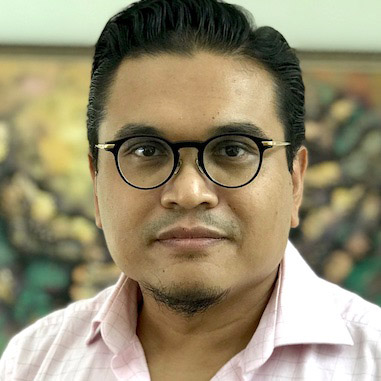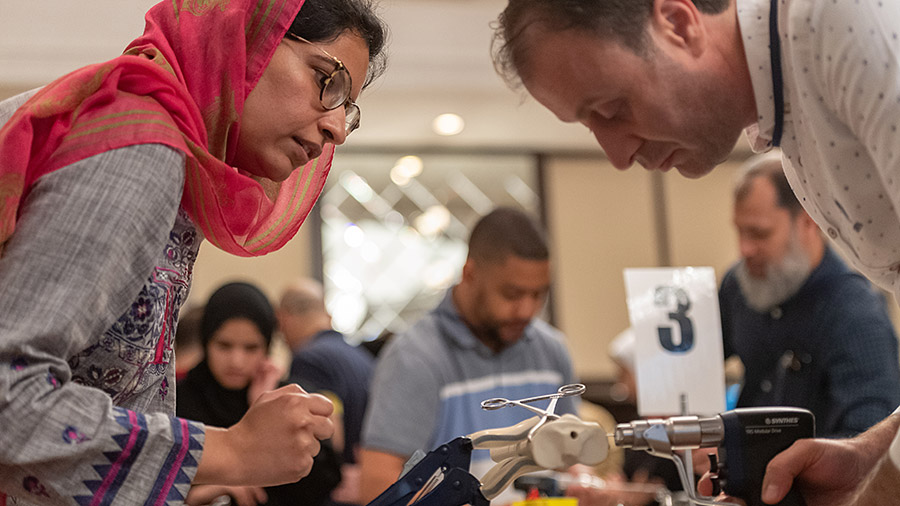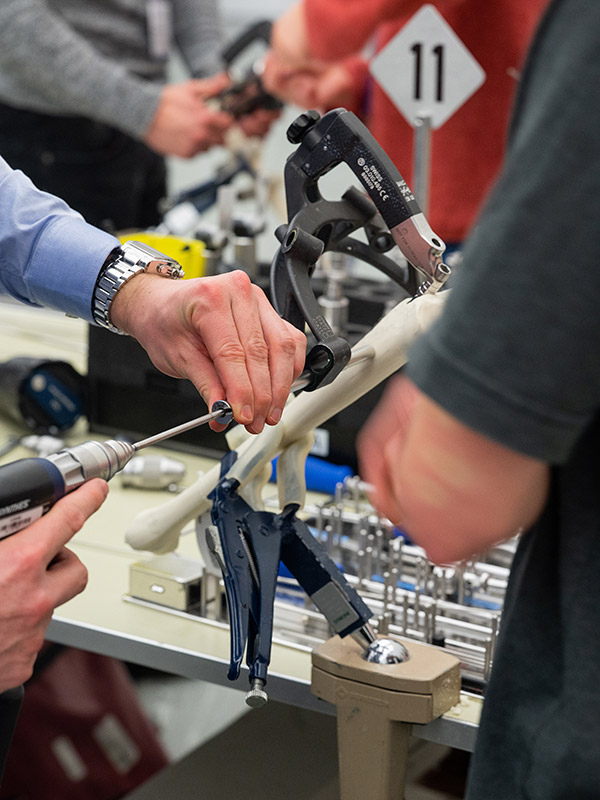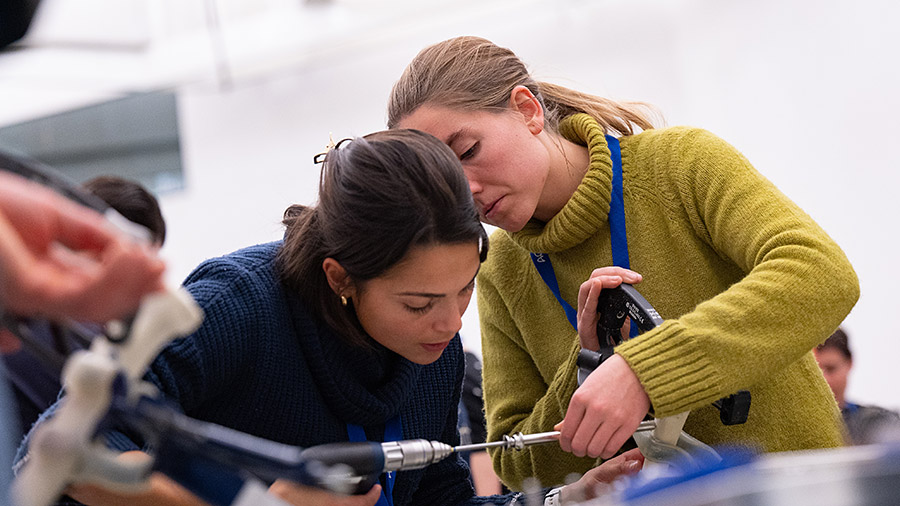AO Trauma Basic Principles of Fracture Management Course
The fundamental course for doctors in surgical training, and doctors interested in furthering their knowledge and skills in operative fracture management.
Why you should choose this course
Top national and regional faculty
2-4 days in duration
For surgeons in training and residents
Network with colleagues from all over the world
World-class curriculum
Course content
-
Course modules
- Module 1: General principles
- Module 2: Principles and management of diaphyseal fractures
- Module 3: Principles and management of articular fractures
- Module 4: Preoperative planning and forearm fractures
- Module 5: Emergency management and polytrauma patient
- Module 6: Special issues and problems
-
AO Skills Lab – Simulations
- Torque measurement of bone screws
- Soft-tissue penetration during drilling
- Heat generation during drilling
- Mechanics of bone fractures
- Techniques of reduction
- Mechanics of intramedullary fixation
- Mechanics of plate fixation
- Fracture healing and plate fixation
- Damaged implant removal
-
Practical exercises – Dry lab
- Internal fixation with screws and plates—absolute stability
- Principles of the internal fixator using the locking compression plate (LCP)
- Application of a modular large external fixator
- Intramedullary (IM) nailing (tibial or femoral shaft)
- Preoperative planning—“plan your forearm operation”
- Operate your plan—fixation of a 22C1 forearm fracture using the LCP 3.5 (8 and 11 holes)
- Tension band wiring of the olecranon
- Management of a type 44C malleolar fracture
- Management of a trochanteric fracture
- Stabilization of the pelvic ring using a large external fixator*
- Application of the Large Distractor*
- Internal fixation with screws and plates (optional additional part): LCP as a compression plate with a lag screw, buttress plating*
- Management of a femoral neck fracture using 7.3 mm cannulated screws*
*Only in selected courses. Check your chosen date and location for the full program.
-
Small group discussions
- General principles, classification, concepts of stability, their influence on bone healing, and how to apply implants to achieve appropriate stability
- Management principles for the treatment of diaphyseal fractures
- Management principles for the treatment of articular fractures
- Polytrauma and complications*
*Only in selected courses. Check your chosen date and location for the full program.
Course details may be subject to change. Please check your chosen date and location for the detailed program.
Target audience
- Doctors in surgical training
- Doctors interested in furthering their knowledge and skills in operative fracture management
Competencies
- Understand the concepts of stability, their influence on bone healing, and how to apply implants to achieve the appropriate stability
- Plan a treatment based on assessment, imaging, classification, and decision making
- Apply reduction techniques in fracture management with attention to the soft tissue
- Apply implants according to their properties utilizing different application techniques
- Assess and treat diaphyseal fractures
- Assess and treat articular and periarticular fractures
- Demonstrate strategies for assessing and treating open fractures and soft-tissue injuries
- Manage the polytrauma patient
- Evaluate, classify, and formulate a treatment plan for pelvic injuries and acetabular fractures
- Recognize risk factors and complications and manage accordingly
- Recognize and treat bone union disorders
- Recognize and manage special fracture circumstances
What does competency-based curriculum development mean?
Residents education taskforce
The Residents education taskforce is a group of experts who build and continuously improve our educational program. It consists of three

Narayan Ramachandran (OM)
Term: 2022–2024

Sue Deakin (UK)
Term: 2023–2025

Khairul Faizi Mohammad (MY)
Term: 2023–2025
See a full list of all regional program contributors and past international program editors.
Not the right course?
Find our list of all curricula courses here.




